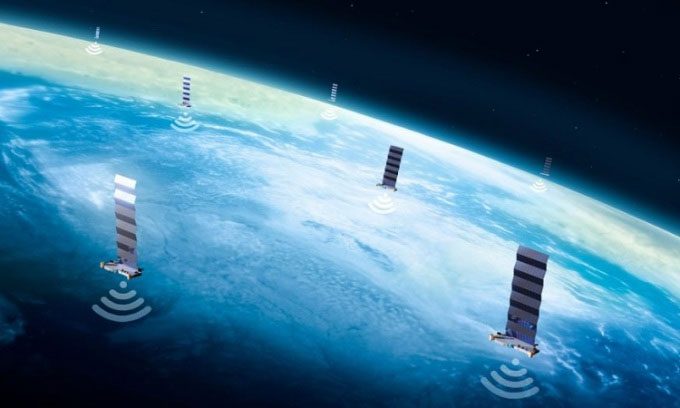SpaceX has announced that the new upgrades to its Starlink 2.0 satellites will help mitigate the impact on sky observation for the global astronomical community.

Simulation of the Starlink satellite network in Earth’s orbit. (Photo: SpaceX)
On July 30, SpaceX announced several new measures the company will implement to reduce the impact of its internet broadcasting satellites on the astronomical community. These measures are particularly important as Elon Musk, the CEO of SpaceX, indicated that the company plans to launch over 4,200 Starlink satellites within the next 18 months, which would account for two-thirds of all satellites currently in operation. Approximately 2,300 Starlink satellites are already in orbit, and SpaceX has been authorized to launch an additional 30,000 satellites.
In the announcement, SpaceX detailed that they are working with astronomers to develop new equipment that will reduce the amount of sunlight reflected back to Earth from the Starlink satellites. According to the company, Starlink satellites are most visible during the hours just after twilight, a time when astronomers typically observe comets and near-Earth asteroids. NASA has previously warned that Starlink satellites could hinder the detection of hazardous asteroids approaching Earth.
Previously, SpaceX attempted to install a sunshade on the satellites. However, the company noted that while it blocked sunlight, this component also obstructed the laser transmission on Starlink. Additionally, it created too much aerodynamic drag, requiring the satellites to use more energy to maintain their orbit. Instead, SpaceX has designed a mirror-like coating on the satellites that helps disperse most of the reflected sunlight, making Starlink less visible from Earth. The new coating for the Starlink 2.0 satellites will reduce reflected brightness by more than ten times compared to the version currently used on existing satellites.
SpaceX will also use darker materials to ensure the satellite surfaces reflect less light. The company has begun using a dark red color instead of white for the solar panels. For the Starlink 2.0 version, a black coating will be applied to components that cannot be fully covered with the film. Finally, SpaceX announced that they will orient the solar panel clusters of the Starlink 2.0 satellites away from the sun at certain times of the day, such as during twilight, to minimize the amount of light reflected towards Earth.
According to the company, these measures will make Starlink satellites nearly invisible to the naked eye at standard operating altitudes.





















































